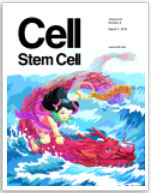 Loss of dystrophin expression in Duchenne muscular dystrophy (DMD) causes progressive degeneration of skeletal muscle, which is exacerbated by reduced self-renewing asymmetric divisions of muscle satellite cells. This, in turn, affects the production of myogenic precursors and impairs regeneration and suggests that increasing such divisions may be beneficial.
Loss of dystrophin expression in Duchenne muscular dystrophy (DMD) causes progressive degeneration of skeletal muscle, which is exacerbated by reduced self-renewing asymmetric divisions of muscle satellite cells. This, in turn, affects the production of myogenic precursors and impairs regeneration and suggests that increasing such divisions may be beneficial.
Here, through a small-molecule screen, a team of Canadian researchers identified epidermal growth factor receptor (EGFR) and Aurora kinase A (Aurka) as regulators of asymmetric satellite cell divisions. Inhibiting EGFR causes a substantial shift from asymmetric to symmetric division modes, whereas EGF treatment increases asymmetric divisions. EGFR activation acts through Aurka to orient mitotic centrosomes, and inhibiting Aurka blocks EGF stimulation-induced asymmetric division. In vivo EGF treatment markedly activates asymmetric divisions of dystrophin-deficient satellite cells in mdx mice, increasing progenitor numbers, enhancing regeneration, and restoring muscle strength.
Therefore, activating an EGFR-dependent polarity pathway promotes functional rescue of
dystrophin-deficient satellite cells and enhances muscle force generation.
